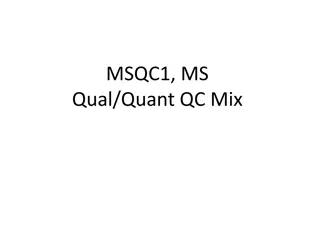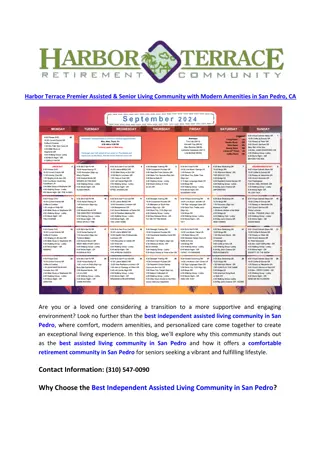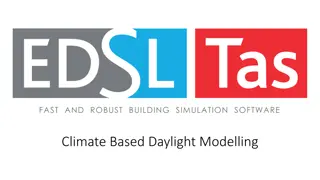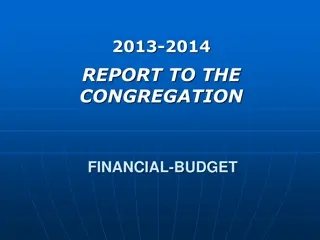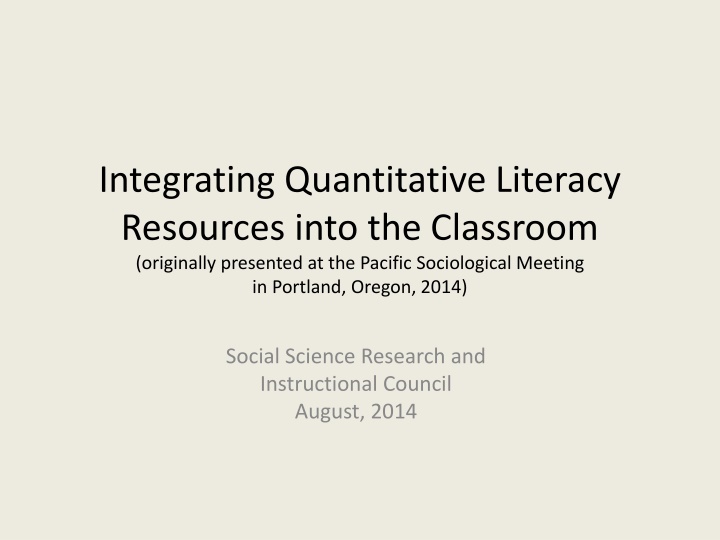
Integrating Quantitative Literacy Resources into the Classroom: A Guide
Learn how to effectively integrate quantitative literacy resources into the classroom for enhanced learning. Explore the dimensions, importance, and strategies of quantitative literacy in sociology education. Discover the key elements of quantitative literacy and how to incorporate them into the curriculum.
Uploaded on | 0 Views
Download Presentation

Please find below an Image/Link to download the presentation.
The content on the website is provided AS IS for your information and personal use only. It may not be sold, licensed, or shared on other websites without obtaining consent from the author. If you encounter any issues during the download, it is possible that the publisher has removed the file from their server.
You are allowed to download the files provided on this website for personal or commercial use, subject to the condition that they are used lawfully. All files are the property of their respective owners.
The content on the website is provided AS IS for your information and personal use only. It may not be sold, licensed, or shared on other websites without obtaining consent from the author.
E N D
Presentation Transcript
Integrating Quantitative Literacy Resources into the Classroom (originally presented at the Pacific Sociological Meeting in Portland, Oregon, 2014) Social Science Research and Instructional Council August, 2014
Agenda Quantitative Literacy Teaching Resources Survey Documentation and Analysis (SDA) Discussion
Quantitative Literacy Rhonda Dugan Sociology CSU Bakersfield rdugan2@csub.edu
What is Quantitative Literacy (QL)? Emergence in 1990s General Education requirement QL is not a synonym for statistics National Council on Educational Statistics (NCES): Knowledge & skills to perform quantitative tasks such as balancing a checkbook [or] figuring out a tip
What does Quantitative Literacy (QL) Involve? Ability to perform algebraic/logical operations Develop problem solving skills Foster analytical skills to apply across disciplines
Dimensions of Quantitative Literacy (QL)? Five dimensions (Steen 1997): Practical Civic Professional Recreational Cultural
QL in Sociology American Sociological Association (ASA): focus on scientific literacy of sociology majors Address the scientific reasoning gap Increase integration of data analysis, computer literacy in undergraduate sociology courses Key: early classroom exposure
Integrating Data Analysis Project (IDA), 2002 Collaborators: ASA, Social Science Data Analysis Network (SSDAN) at Univ. of Michigan Funded by National Science Foundation (NSF) Consortium of 12 sociology departments Incorporate use of data modules (U.S. Census, GSS)
Quantitative Literacy Focus: How sociology departments can incorporate QL in curricula Provide students empirical experience Active learning Comprehension of social problems, community concerns Potential challenges Availability of technology Large enrollment-based courses Time
Bibliography Howery, Carla B. and Havidan Rodriguez. 2006. Integrating Data Analysis (IDA): Working with Sociology Department to Address the Quantitative Literacy Gap. Teaching Sociology, 34: 23-38 National Center for Educational Statistics. National Assessment of Adult Literacy. Steen, Lynn. 1997. Why Numbers Count: Quantitative Literacy for Tomorrow s America. New York: College Board. Sweet, Stephen and Kerry Strand. 2006. Cultivating Quantitative Literacy: The Role of Sociology. Teaching Sociology, 34(1): 1-4 Wilder, Esther Isabelle. 2010. A Qualitative Assessment of Efforts to Integrate Data Analysis throughout the Sociology Curriculum: Feedback from Students, Faculty, and Alumni. Teaching Sociology, 38(3): 226-246.
Teaching Resources Ed Nelson Sociology CSU Fresno ednelson@csufresno.edu
Resources Teaching with Data Merlot Inter-University Consortium for Political and Social Research (ICPSR) Social Science Data Analysis Network (SSDAN) Roper Center for Public Opinion Research Field Institute Social Science Research and Instructional Council (SSRIC)
Survey Documentation and Analysis (SDA) Josh Meisel Sociology Humboldt State University meisel@humboldt.edu
Easy Access Data Sources No background in statistics necessary Ability to quickly create tables drawing on government agency data sets Criminology and Juvenile Delinquency: OJJDP Statistical Briefing Book
Online Data Analysis What is it? Advantages and disadvantages Available SDA Data Sets Available statistical Procedures Using SDA
Sources for SDA Data Sets SDA Archive located at UC Berkeley ICPSR Thematic Collections Field data located at UC Berkeley List of SDA data sets at CSU Long Beach
ICPSR China Multi-Generational Panel National Archive of Computerized Data on Aging National Archive of Criminal Justice Data Substance Abuse and Mental Health Data




